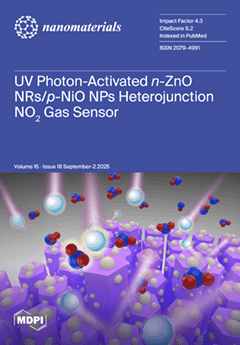Rechargeable aqueous Zn-MnO
2 batteries are positioned as a highly promising candidate for next-generation energy storage, owing to their compelling combination of economic viability, inherent safety, exceptional capacity (with a theoretical value of ≈308 mAh·g
−1), and eco-sustainability. However, this system still
[...] Read more.
Rechargeable aqueous Zn-MnO
2 batteries are positioned as a highly promising candidate for next-generation energy storage, owing to their compelling combination of economic viability, inherent safety, exceptional capacity (with a theoretical value of ≈308 mAh·g
−1), and eco-sustainability. However, this system still faces multiple critical challenges that hinder its practical application, primarily including the ambiguous energy storage reaction mechanism (e.g., unresolved debates on core issues such as ion transport pathways and phase transition kinetics), dendrite growth and side reactions (e.g., the hydrogen evolution reaction and corrosion reaction) on the metallic Zn anode, inadequate intrinsic electrical conductivity of MnO
2 cathodes (≈10
−5 S·cm
−1), active material dissolution, and structural collapse. This review begins by systematically summarizing the prevailing theoretical models that describe the energy storage reactions in Zn-Mn batteries, categorizing them into the Zn
2+ insertion/extraction model, the conversion reaction involving MnO
x dissolution–deposition, and the hybrid mechanism of H
+/Zn
2+ co-intercalation. Subsequently, we present a comprehensive discussion on Zn anode protection strategies, such as surface protective layer construction, 3D structure design, and electrolyte additive regulation. Furthermore, we focus on analyzing the performance optimization strategies for MnO
2 cathodes, covering key pathways including metal ion doping (e.g., introduction of heteroions such as Al
3+ and Ni
2+), defect engineering (oxygen vacancy/cation vacancy regulation), structural topology optimization (layered/tunnel-type structure design), and composite modification with high-conductivity substrates (e.g., carbon nanotubes and graphene). Therefore, this review aims to establish a theoretical foundation and offer practical guidance for advancing both fundamental research and practical engineering of Zn-manganese oxide secondary batteries.
Full article






